RAW EARTH SGRAFFITO
This installation tracks material trade routes and uses traditional Sgraffito techniques to represent geographies and supply chain flows in the city of Paris and around the unique Seine working waterfront.
All built environment is comprised of materials that are initially geological before they are architectural. The geological trade routes of building materials dictate their earthly origins: from strata, rocks, metals, minerals, chemicals, enzymes and bacteria, to politics, labor, human hands and tools. Tracking and comparing localized supply flows of materials across urban regions is therefore key to generate critical insights on material properties, labor, environmental and social life cycles, embodied carbon, and cities themselves in ways not usually accessible.
All built environment is comprised of materials that are initially geological before they are architectural. The geological trade routes of building materials dictate their earthly origins: from strata, rocks, metals, minerals, chemicals, enzymes and bacteria, to politics, labor, human hands and tools. Tracking and comparing localized supply flows of materials across urban regions is therefore key to generate critical insights on material properties, labor, environmental and social life cycles, embodied carbon, and cities themselves in ways not usually accessible.
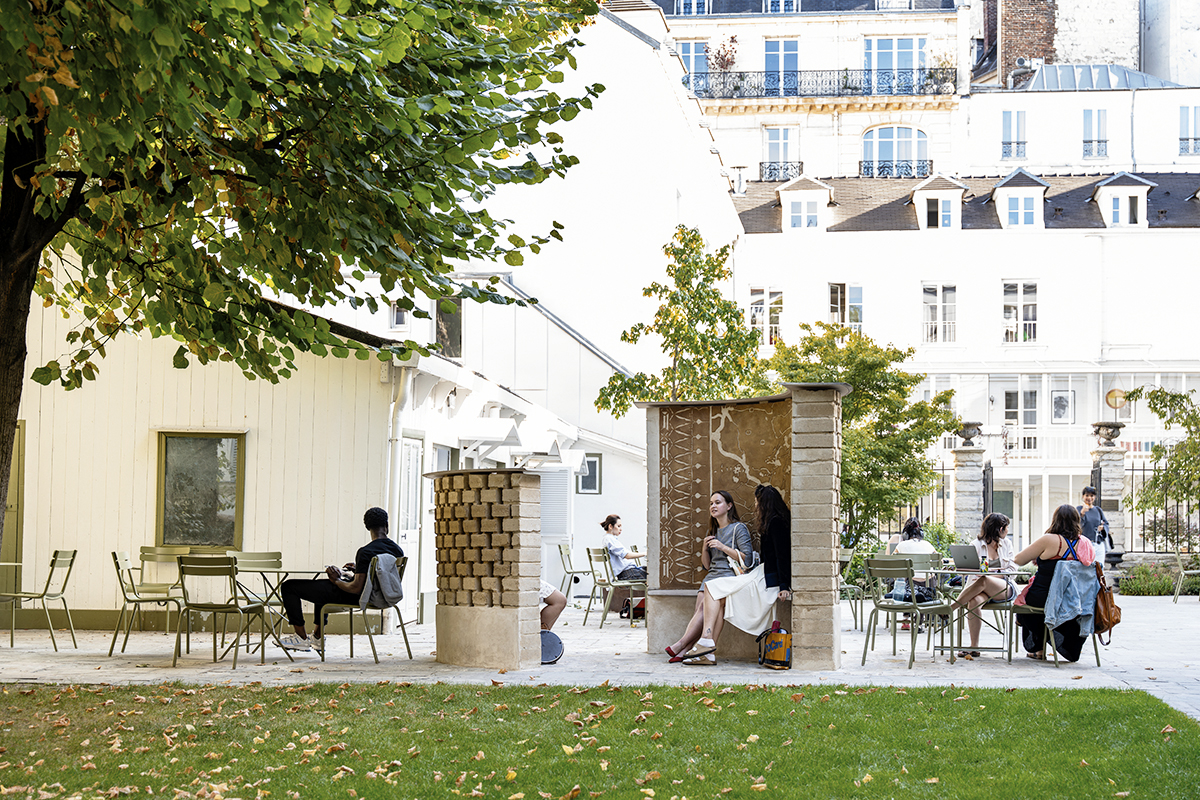

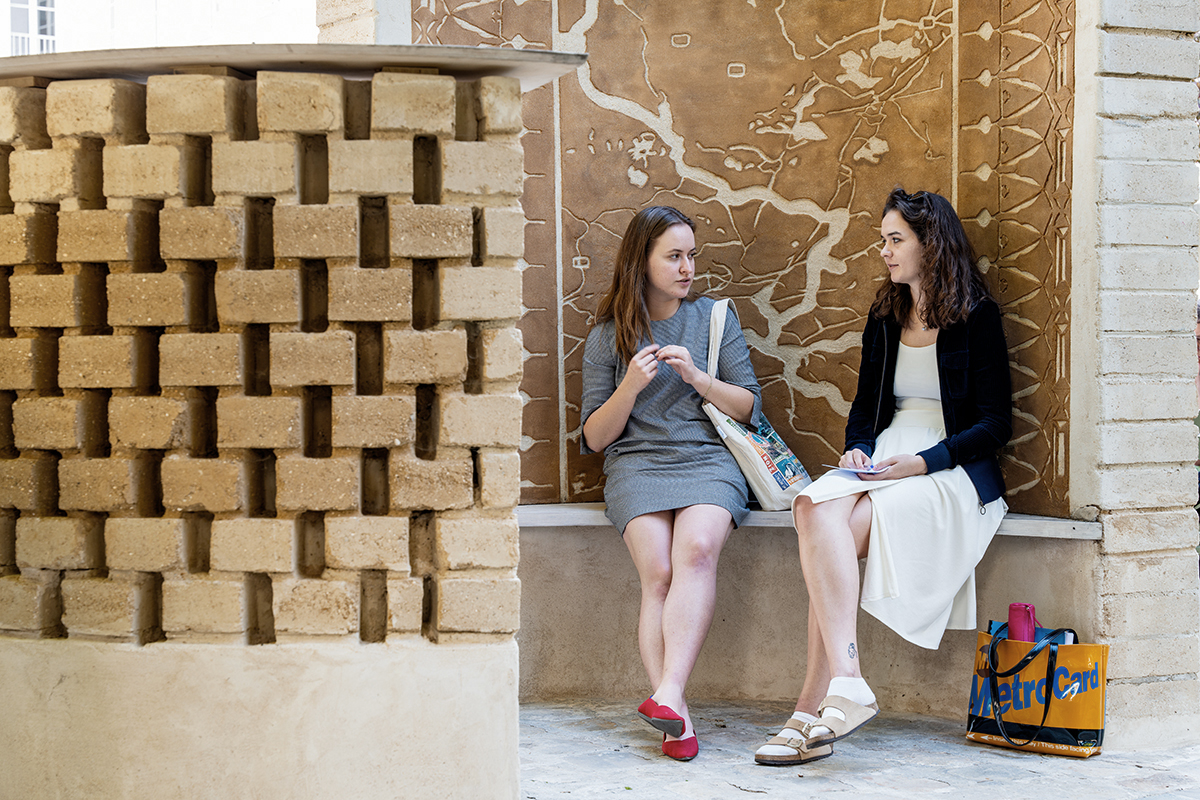
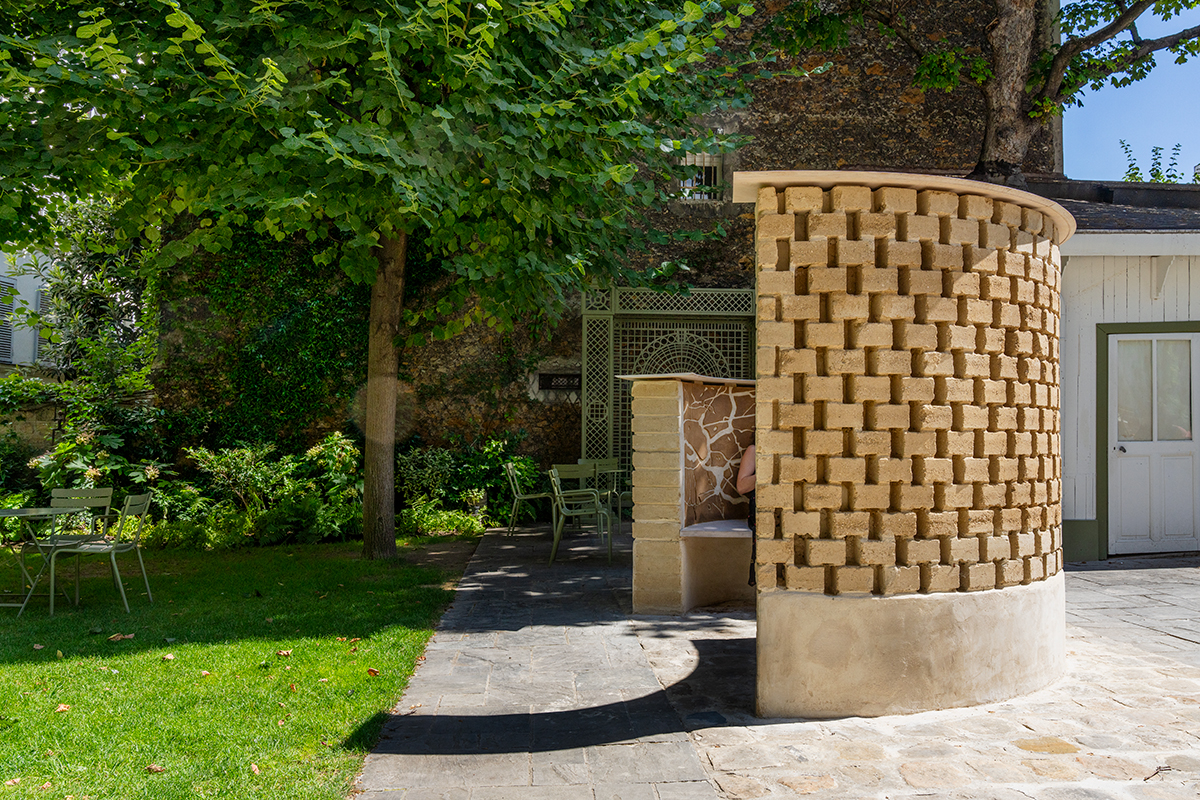



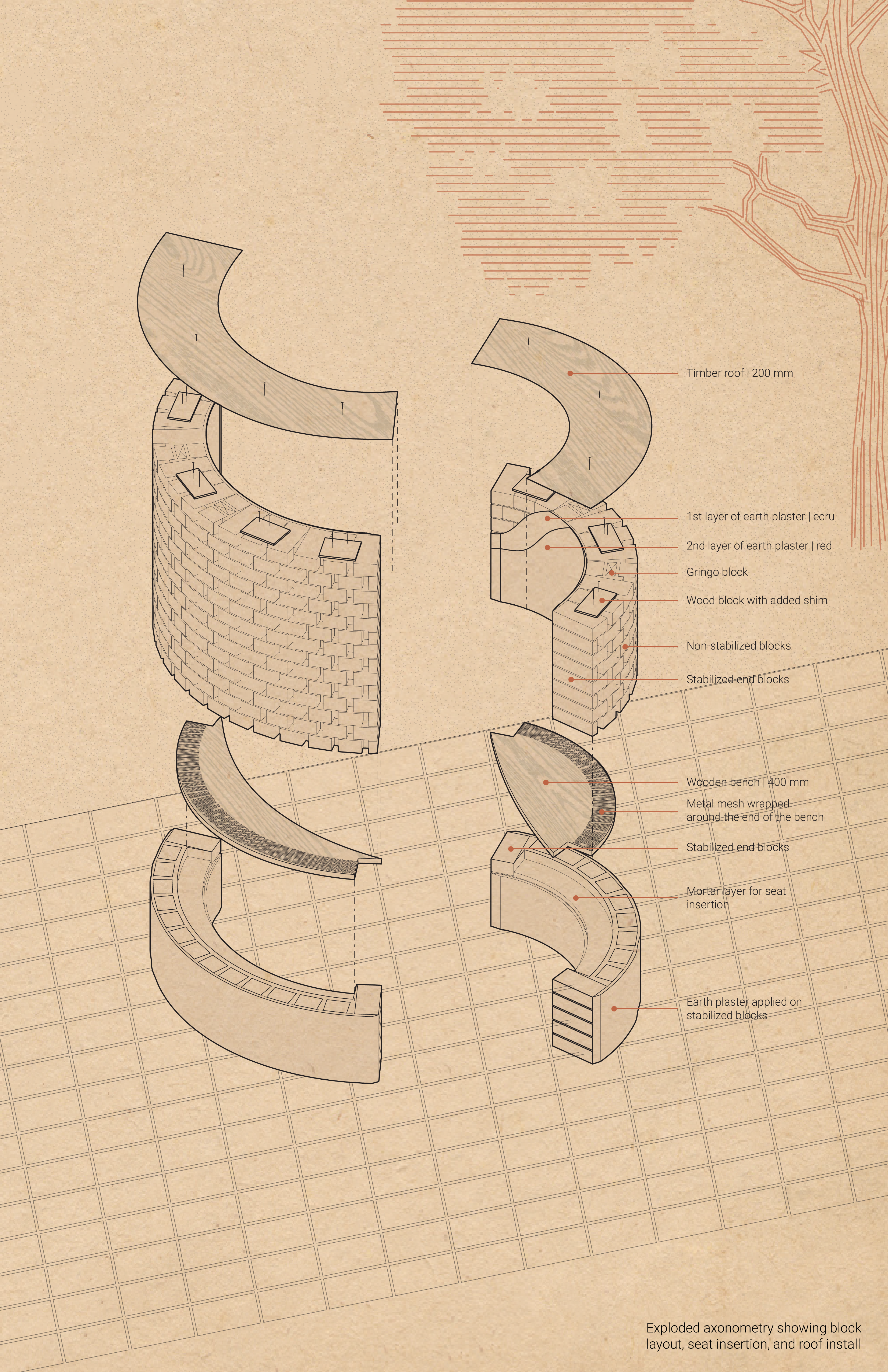



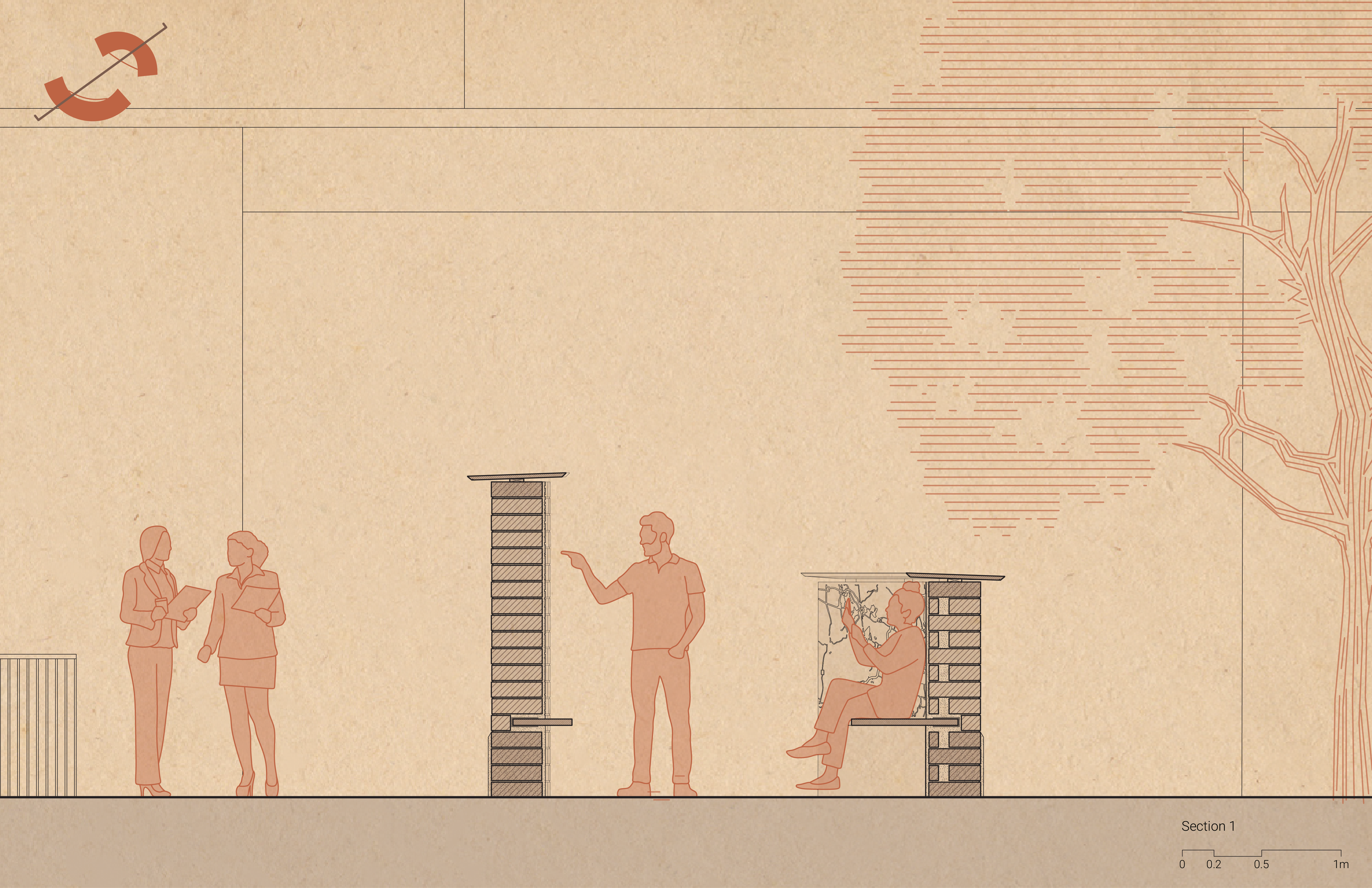

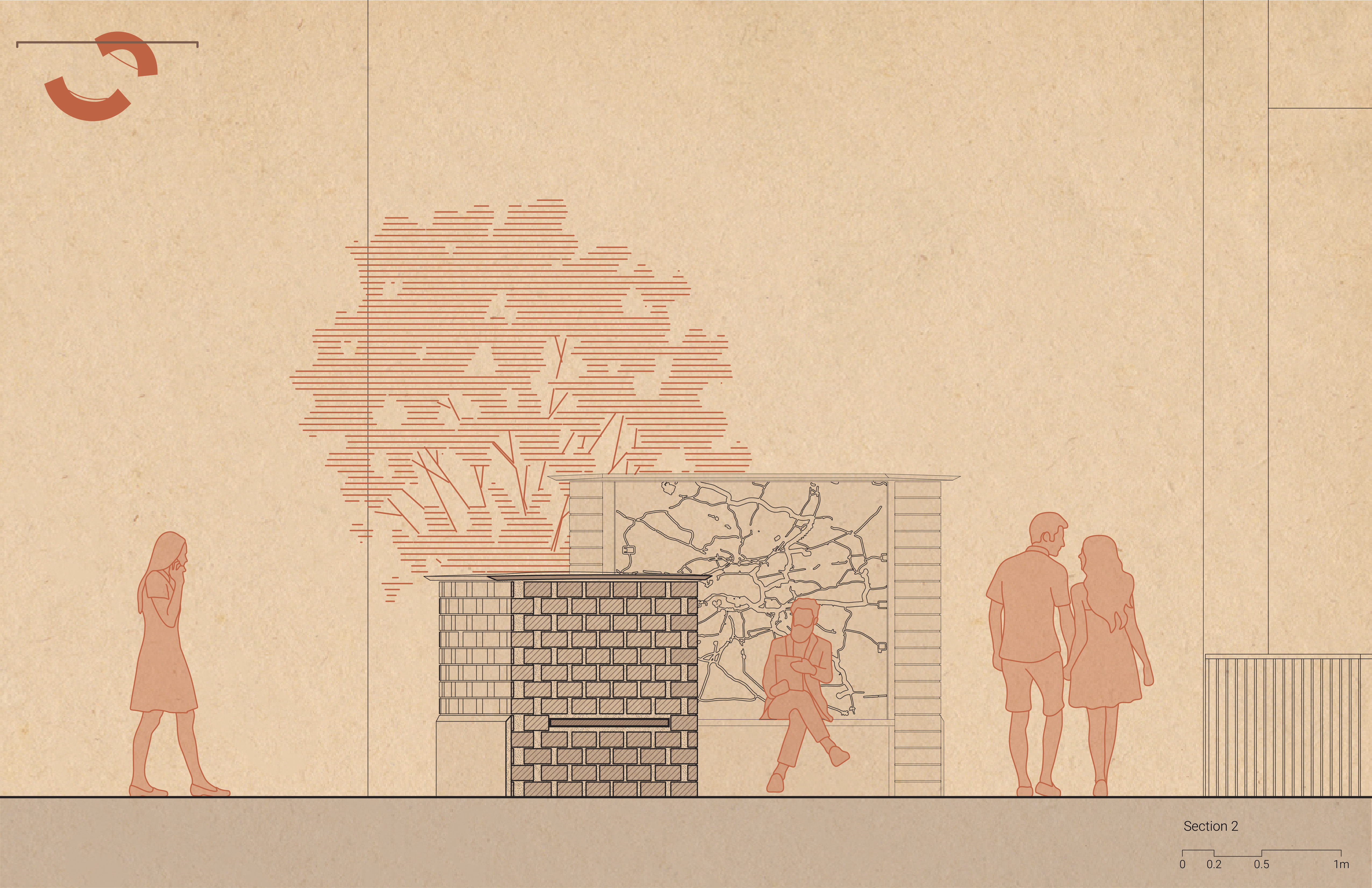

This pavilion installation was built using raw earth - in the form of compressed earth blocks, earth mortar, and earth plaster. Sgraffito techniques was used - in which multiple colored earth plaster layers, carved to reveal a shape that emerges from the lower color. The patterns created a series of map elements that represent the geographical analysis of material procurement to provide an immediate representations of this direct supply chain. It offered the opportunity to trace the relationship between site and hinterland along lines of supply; to consider, by comparison, the typical methods of construction used in the buildings around the workshop site; and to engage in the tactile and social experience of construction labor.

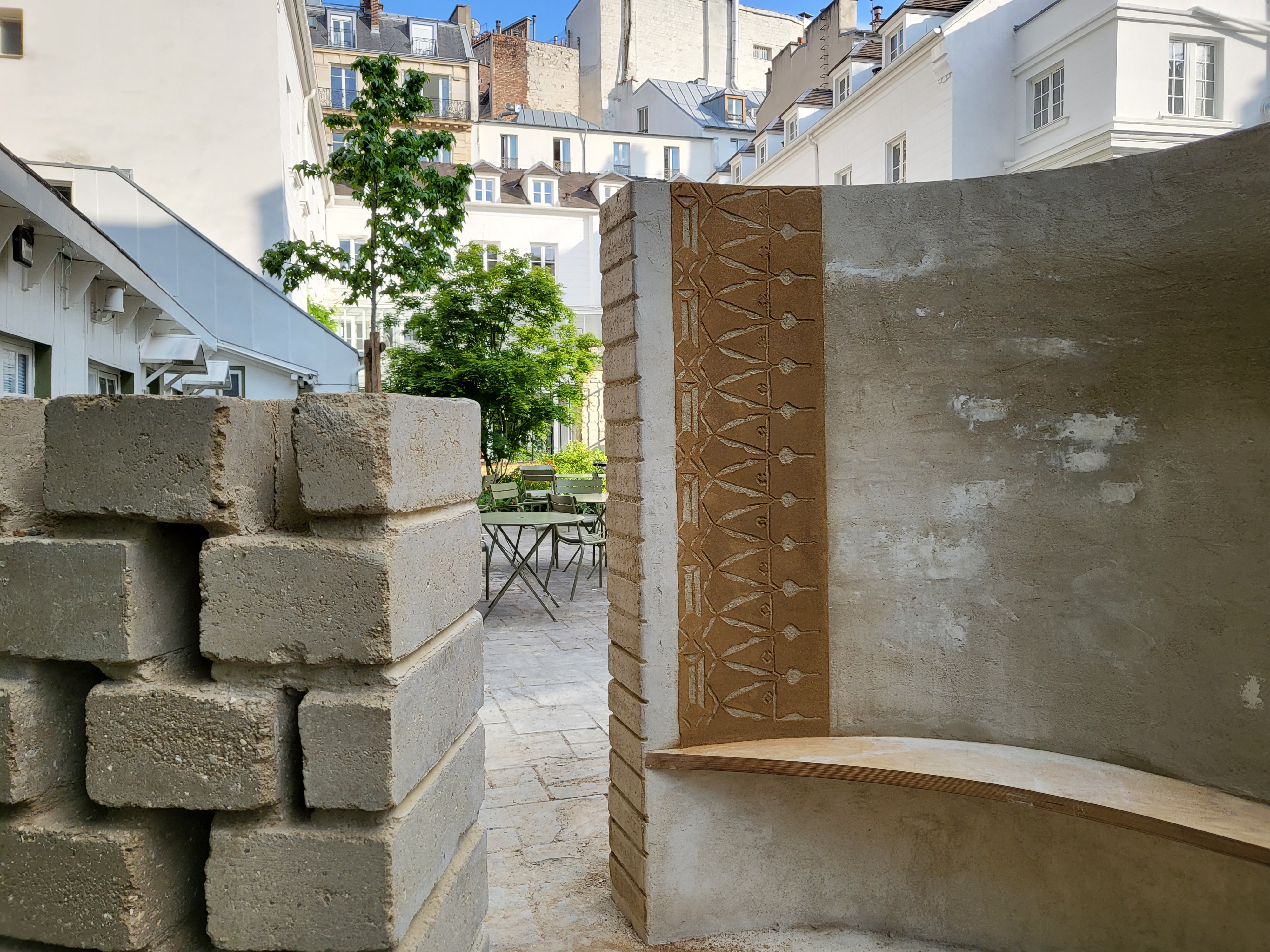

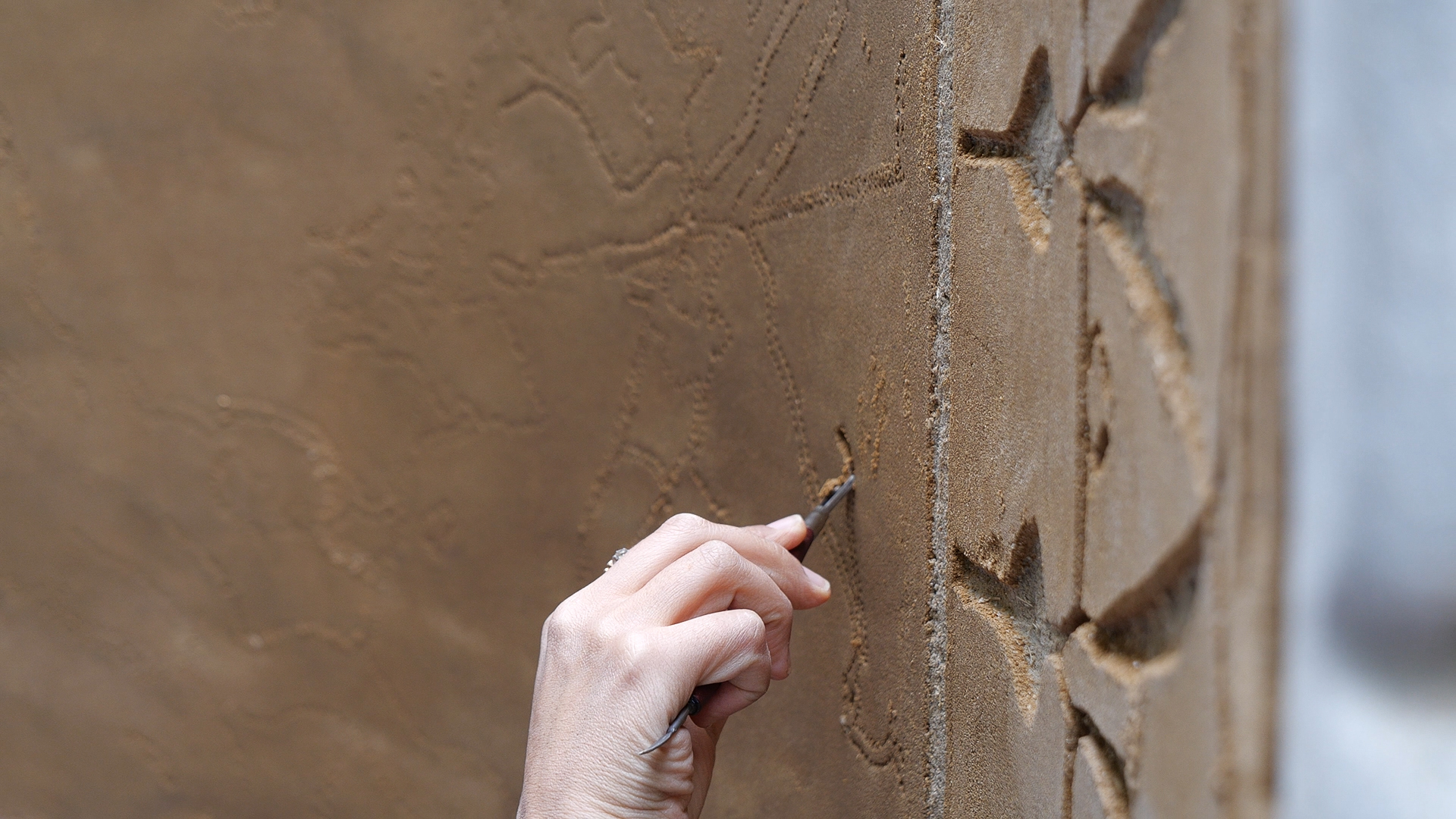




duration:
May 2023 –
ongoing
location:
The Institute for Ideas and Imagination, Reid Hall, Paris
collaborators:
Lynnette Widder, Zina Berrada
volunteers:
Vila Shao, Greta Milstein, Emma Yergat, Elechi Iheanacho, Krista Faurie, Ariela Katz, Grace Schleck
location support:
Brunhilde Biebuyck - Director of Columbia Global Center in Paris, Marie d'Origny - Associate Director of the Institute for Ideas and Imagination
